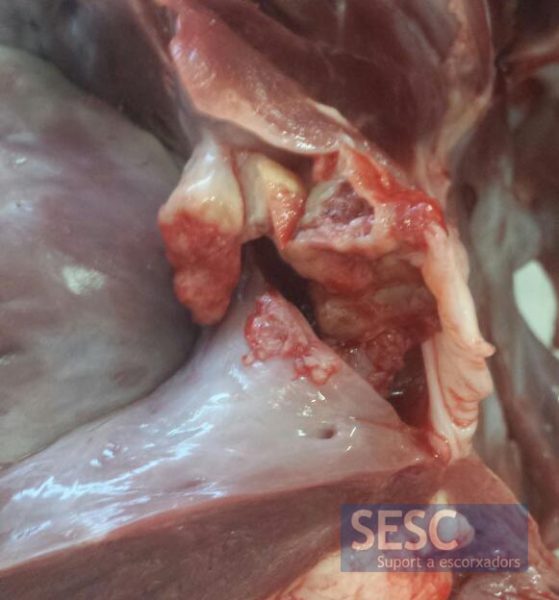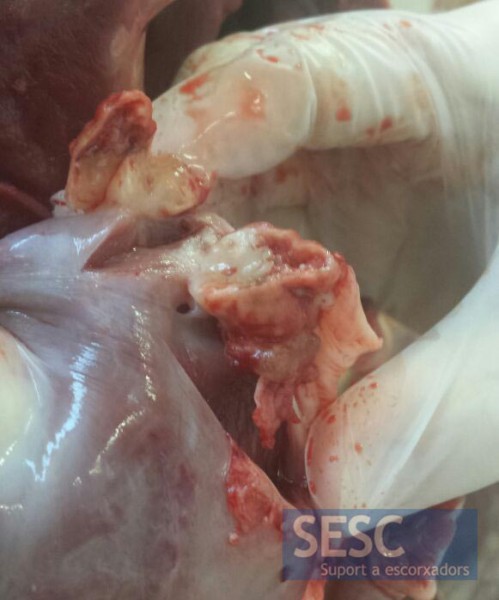Valvular endocarditis in a calf
The referring meat inspector suspected of a verrucous endocarditis.
The histopathological study demonstrated chronic inflammatory lesions (with abundant fibrosis) and lesions indicating a bacterial cause (polymorphonuclear neutrophil leukocytes and presence of bacterial colonies). Therefore a diagnosis of valvular endocarditis was established. The term "verrucous endocarditis" refers to the exophytic character that is usually presented in cases of bacterial endocarditis. This lesion is associated with the formation of thrombi that can cause emboli and subsequent metastatic suppurative lesions in other locations of the carcass.
If this type of lesions are observed it is important to thoroughly inspect the rest of the carcass as it indicates that the animal has undergone a process of sepsis .
The microbiological culture allowed isolation of a pure culture of Streptococcus über which is an environmental pathogen known to cause mastitis.
Other causes of endocarditis can be fungi or parasites. Within the differential diagnosis of this lesion location may also include malignancies such as angioleiomioma (tumor of smooth muscle cells of the vascular wall).



